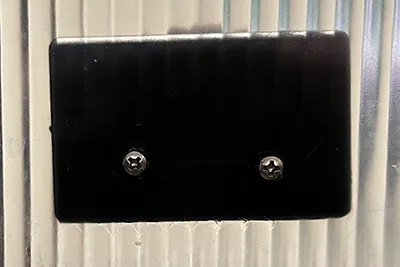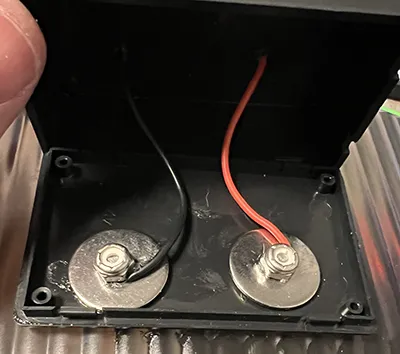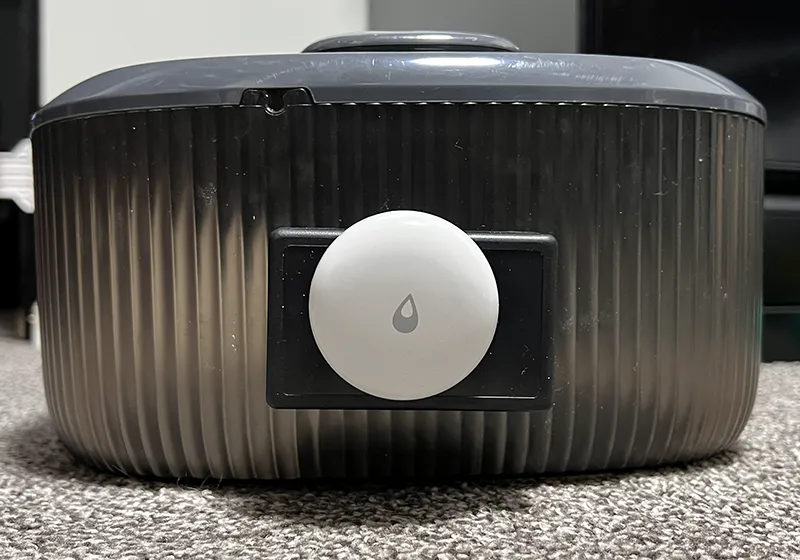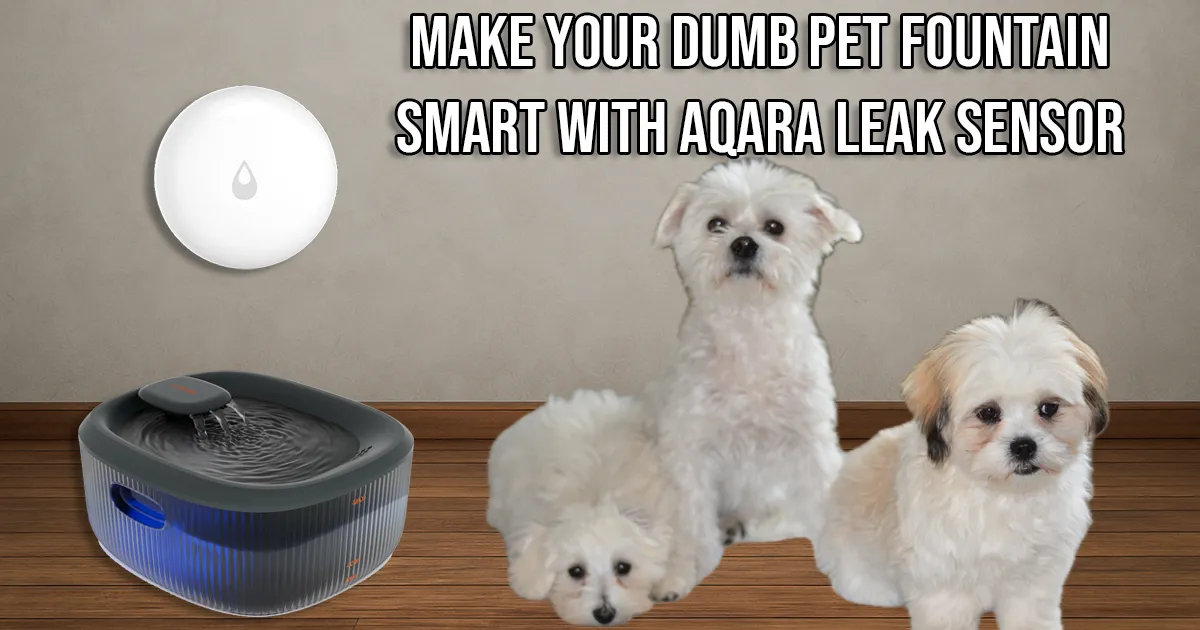Make Your Dumb Pet Fountain Smart with an Aqara Leak Sensor
Turn your pet fountain smart using an Aqara leak sensor and Home Assistant for low-water alerts.
After building a few smart home automations for my dogs, I realized one of the few remaining “dumb” devices was their pet water fountain. It has a built-in light to indicate when it’s empty—but only after the pump is already sucking air. Not exactly smart. With three dogs in the house and one with diabetes, it gets drained fast.
So, I decided to fix that with one of my favorite inexpensive smart home sensors: the Aqara Leak Sensor.
Why I Built This
I got the idea from an X post Aqara shared a while back. Someone used one of their leak sensors to monitor water levels in a swimming pool, and I figured—why not scale that down for a pet fountain?
The concept is simple: the Aqara Leak Sensor triggers when both probes detect continuity through water. If the water drops below the probes, it reports “dry.” By attaching wires to those probes and placing them at the right height in the reservoir, I can have Home Assistant notify me before the fountain runs dry.
Resources for This Project
ChrisHansenTech is a participant in the Amazon Services LLC Associates Program, an affiliate advertising program designed to provide a means for sites to earn advertising fees by advertising and linking to Amazon.com. As an Amazon Associate I earn from qualifying purchases.
- WOPET Dog Water Fountain
- The fountain I use for this project. It has a nice design and runs on 5V DC.
- LeMotech Project Box Black 3.27”x3.19”x2.2”
- May update to this larger box to fit the Aqara sensor inside.
- Aqara Leak Sensor
- BNTECHGO 22 AWG Silicone Wire Kit (Red, Black, White, Blue, Green)
- RTV 4500 Food Contact Safe Silicone Sealant, Clear
- #6-32 × ½-inch Stainless Steel Pan Head Machine Screws
- #6 Nylon Lock Nuts
- #6 Stainless Flat Washers
Most of these are inexpensive and easy to source online or at any hardware store
How It Works
The Aqara Leak Sensor runs on a coin cell battery and detects water through a simple continuity circuit. When water bridges the two probes, it reports “wet”. When the circuit breaks, it reports “dry”.
By extending the two probe leads with wire and stainless steel bolts, the sensor can sit safely outside the fountain while the bolts act as your new probes inside the reservoir.
When the water level drops below those bolts, the sensor switches to “dry”, and Home Assistant sends me a notification—or Alexa announces it if it’s during the day.
Here’s how I built it step by step.
Building the Probe Setup
-
Drill the holes
Drill two 9/64″ holes about 1½ inches apart near the low water mark of your fountain’s reservoir. The button heads of the screws should face inside the fountain so they’re flush and easy to clean. -
Seal and insert bolts
Add a thin bead of RTV 4500 silicone around each hole. Insert your #6-32 × ½-inch stainless bolts from inside to outside. Wipe away any excess silicone and let it cure 24 hours. -
Mount the project box
Drill matching holes in your project box for the bolts. Slide the box over the bolt threads, add flat washers, your wire terminals, and nylon lock nuts. A small bead of silicone around the box edge helps make a watertight seal. -
Wire it up
Attach 22 AWG stranded silicone wire to the Aqara sensor’s pads. Use a 2mm hex wrench. Run the wires to your bolts and secure them under the washers inside the box. If you like, coat the connections with a dab of dielectric grease. -
Seal and close
Run a small bead of silicone around the wire entry point.
 Inside view of the machine screws
Inside view of the machine screws
 Wires attached to machine screws
Wires attached to machine screws
Update: Sensor Placement
The project box I originally used turned out to be a bit too small. So, instead, I mounted the sensor directly on the outside of the project box and tucked the bolts and wires neatly inside.
 Aqara Leak Sensor attached to project box
Aqara Leak Sensor attached to project box
This actually turned out better—it shows the Aqara sensor clearly and makes it easier to change the battery later. If you want a fully enclosed version, use a slightly larger box.
Home Assistant Setup
Since the Aqara Leak Sensor is a Zigbee sensor, you can connect it to an Aqara M3 Hub, Zigbee2MQTT, or ZHA. I used Zigbee2MQTT because it is near my three pet feeders, which you can read about in my Automating Meal Time post, which are also connected through Zigbee2MQTT.
Once paired to Zigbee2MQTT or ZHA, your Aqara Leak Sensor will appear as a binary sensor—binary_sensor.dogfountain_water_leak.
Here’s the Home Assistant automation that makes it all work:
1
2
3
4
5
6
7
8
9
10
11
12
13
14
15
16
17
18
19
20
21
22
23
24
25
26
alias: Dog Water Fountain Low
description: "Send notification when dog fountain water level is low"
triggers:
- trigger: state
entity_id:
- binary_sensor.<your_leak_sensor_entity_id>
to: "off"
conditions: []
actions:
- action: notify.<your_mobile_device_notify_service>
metadata: {}
data:
message: 🐶 The dogs' water fountain is low. Please refill it
- if:
- condition: time
after: "06:00:00"
before: "21:00:00"
then:
- action: notify.send_message
metadata: {}
data:
message: The dogs' water fountain is low. Please refill it.
target:
entity_id: notify.<your_echo_device_entity_id>
mode: single
This way, I always get a notification on my phone, but Alexa only announces it between 6 AM and 9 PM. No midnight barking from my Echo.
Safety Notes
The Aqara sensor uses a 3V coin battery, so it’s completely safe to use around water. The pump in most fountains runs on 5 V DC, but since the two systems are isolated, there’s no electrical hazard.
Still, seal your hardware properly and give the silicone 24 hours to cure before refilling the fountain.
Results
The setup works perfectly. When the water drops below the probes, I get an alert well before the pump starts running dry. It’s simple, inexpensive, and looks clean.
This setup also ties in nicely with my other pet automations, like the smart pet feeders. Since I have an older diabetic dog, I also use the Home Assistant calendar to have Alexa announce twice a day when it’s time for his insulin.
Final Thoughts
This project is a great example of how a simple sensor can turn something ordinary into something smart and practical. It’s cheap, quick to build, and solves a real problem—no more guessing when the dogs’ fountain is running dry.
If you try this yourself, let me know how it goes.
Want to share your thoughts or ask a question?
This blog runs on coffee, YAML, and the occasional dad joke.
If you’ve found a post helpful, you can
support my work or
☕ buy me a coffee.
Curious about the gear I use? Check out my smart home and homelab setup.
